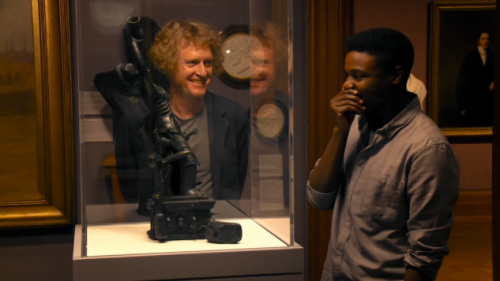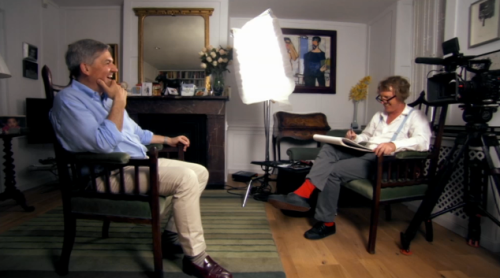“Our most beautiful and complex artwork that
we will ever make is our identity”
In the Turner Prize winner’s latest series Who Are You? Grayson Perry challenges our perception of identity, portraiture, and the traditional format of the arts documentary.
In what could be seen as a follow-up to his 2012 series In the Best Possible Taste, which explored the notions of class in Britain, Perry is this time concerned with the concept of identity and how it can be represented through portraiture.
Perry’s subjects in the first programme of the series are described as people who are at a “crossroads or a crisis in their identity”. But that is not to say that their struggles for self-understanding are particularly unique. Rather, Perry presents us with an exploration of postmodern identity through the eyes of the artist. Our sense of who we are is not static and stable, but fluid and dynamic, and more importantly, it is as much about how others see us as it is about how we see ourselves.
Perry seeks to understand in greater depth some of the recognisable archetypal identities presented to us within today’s society, such as “the powerful, white, bullet-proof, male” figure of ex-politician Chris Huhne and the shallow, fake, celebrity of reality TV star Rylan Clark. Through the deconstruction of these identities, Perry demonstrates the extent to which they are less of an individual construction and more shaped by society and the roles we assign one another within it. As much as the portraits represent the individual identity of the sitter, they also reflect parts of our own identity back to us. The stories and experiences that are revealed through these individual journeys of power, fame, religion and gender are, at their core, universal in nature.
The struggle for creating a coherent sense of self within this context is perhaps most powerfully represented through the process of creating Rylan’s portrait. Watching a video of one of his past performances on a laptop at his Mum’s house in Essex, the former X Factor contestant confides in Perry, “I don’t think I could ever be happy, because I know it’s all fake”. In this respect, the choice of David Bowie’s Ziggy Stardust makes perfect sense as the track chosen as the background music for our introduction to Rylan. The song charts the self-destruction of Bowie’s on-stage persona, consumed by his own fame and ego, a fear which Rylan also seems to articulate to some degree.
The challenge for Perry throughout the series is negotiating how to represent these complex identities within a single, static piece of art. Perry works within a range of artistic mediums in order to best represent his subjects, from the fragility of the smashed pot for Chris Huhne, to using a hijab as the canvas on which to depict Kayleigh’s conversion to Islam. This is a process that draws attention to how the medium in which artistic vision is presented carries particular significance in regards to the meanings embodied within the piece. Just as Perry unpicks the layers of identity within his subjects, his portraiture also features layers of meaning in the form of collages and numerous references to other artistic traditions.
But Who Are You? doesn’t just make us reconsider how we think about identity and how it is represented within portraiture, it also deconstructs the notion of the traditional arts documentary format.
In a recent article in the Guardian, Mark Lawson suggests that Grayson Perry has ‘revolutionised art on television’, with his mix of talkshow, arts documentary and investigative journalism, to create a ‘mould-breaking combination’.
I would argue that this combination works so well because the elements of talkshow, arts documentary and investigation compliment each other in a way that draws on the strengths of each genre. The talkshow element gives the arts a social context that engages the viewer on a personal level. In turn, the artistic context provokes the interviewees to perhaps reveal more about themselves than they would in a traditional talkshow setting, which is usually centred on some form of commercial self-promotion. And finally, the investigative component provides the framework for a clear narrative flow throughout the programme for the viewer to follow.
But perhaps what is most compelling about this formula is that it demonstrates how good art and good television can be made in tandem. The television series and the portraits themselves both exist as two separate entities that are still ideologically bound through their means of production. What makes this revolutionary is that it demonstrates how one medium can enhance the other in a way that emphasises their similarities, rather than their differences. Television and art do not have to remain on either side of the boundary between ‘high’ and ‘low’ culture, but can form a symbiotic relationship that draws on the strengths of each form of production.





